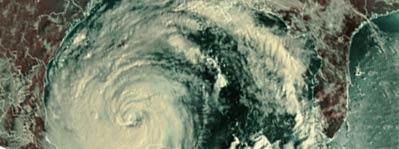
- Programs
- Center for Nuclear Femtography
- CNF Research
- Space Science & Technology
- CRESST II
- GESTAR II
- THE LABORATORY SERVICES AND SUPPORT OPERATIONS (LASSO)
- NIST PREP
- Information Technology
- XSEDE
- C2Exchange
- IT Tech Talks and Best Practices
- Research In Action
- History
- Coastal & Environmental Research
- Coastal Ocean Modeling Testbed
- Research in Action
- History
Programs > Coastal & Environmental Research > Research in Action
Research in Action
 SURA facilitates a collaboration of US and Canadian universities along with private industry, and government agencies to administer the Coastal and Ocean Modeling Testbed (COMT). COMT has developed a community research framework to advance the testing and evaluation of predictive models of key coastal ocean environmental issues including inundation, wave height, and hypoxia.
SURA facilitates a collaboration of US and Canadian universities along with private industry, and government agencies to administer the Coastal and Ocean Modeling Testbed (COMT). COMT has developed a community research framework to advance the testing and evaluation of predictive models of key coastal ocean environmental issues including inundation, wave height, and hypoxia.
This framework supports integration, comparison, scientific analyses; and archiving of data and model output. The cyber-infrastructure that has been developed includes a repository of data assembled from numerous observations and models as well as tools for comparing and assessing the models and data.
The Testbed has yielded new insights for obtaining more accurate model predictions that will help to protect life and property, and facilitate economic resiliency. Examples of achievements include:
- The Estuarine Hypoxia Modeling in the Chesapeake Bay component of COMT is evaluating existing hydrodynamic and water quality models used or likely to be used for operations and/or for regulation in the Chesapeake Bay and similar estuarine environments. Outcomes from this work are expected to help with the development of operational hypoxia forecast capabilities for the Bay.
- The Inter-comparison of Hypoxia Models for the Northern Gulf of Mexico and Seasonal Forecasts and Nutrient Load Reduction Scenarios project of COMT is focused on identifying factors that influence the prediction of dissolved oxygen concentration. Results are informing the interagency Hypoxia Task Force’s efforts to devise near-term and long‑term nutrient management strategies.
- The aim of the Surge and Wave Inundation Model Testbed for Puerto Rico/U.S. Virgin Islands project is to extend present operational surge forecasting capabilities to steep-sloped areas such as around Caribbean and Pacific islands and incorporate and quantify the surge contributions by wind waves. The goal is to transition this capability to National Hurricane Center and local WFOs.
- The US West Coast component of COMT brings together researchers involved in coastal ocean modeling, data assimilation, and prediction with the goal of improving current prediction systems, and comparing performance of different models and data assimilation approaches. Accurate forecasts of oceanic physical and biochemical variables along the US West Coast will provide information in support of safe navigation, environmental hazard response, search and rescue, fishery management, and public health.
- The Cyber Infrastructure (CI) component of COMT has focused on both management of seminal COMT datasets, and communication of project objectives and results. A website was developed to explain the overall mission and objectives of COMT, and to provide detailed information about each project. A COMT Upload Tool is under development that will allow COMT project managers to provide data that is shared through the COMT CI system.